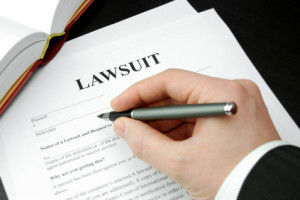By: Michael Powers
 By now, everyone has heard of the MERS system and mortgage backed securities. The MERS system was the system used to transfer, sell and “pool” millions of mortgages into mortgage backed securities during the mid to late 2000’s. As the mortgage crisis began, and facts emerged regarding the extent of the mortgage fraud committed during that time became clear, attorneys began to question the validity and legality of the MERS system as well. The argument was simple; the MERS system was not sufficient to prove proper assignment documentation of the mortgage notes in question. Under basic contract law, such assignment documents are necessary to prove the standing of the owner of the note. As codified in the FDCPA (Fair Debt Collection Practices Act), a consumer has the right to request verification of debt. If the party attempting to collect the debt cannot show an original contract and any assignments making them the rightful owner of the debt, they do not have the legal right to exercise any of the terms contained in the instrument. In the case of the MERS system and mortgages notes which were bundled into mortgage backed securities, many of its participants relied on the system itself as evidence of ownership, and did not bother to maintain assignment documentation that would be required for any other kind of debt. Consequently, their ownership was challenged in the highest courts.
By now, everyone has heard of the MERS system and mortgage backed securities. The MERS system was the system used to transfer, sell and “pool” millions of mortgages into mortgage backed securities during the mid to late 2000’s. As the mortgage crisis began, and facts emerged regarding the extent of the mortgage fraud committed during that time became clear, attorneys began to question the validity and legality of the MERS system as well. The argument was simple; the MERS system was not sufficient to prove proper assignment documentation of the mortgage notes in question. Under basic contract law, such assignment documents are necessary to prove the standing of the owner of the note. As codified in the FDCPA (Fair Debt Collection Practices Act), a consumer has the right to request verification of debt. If the party attempting to collect the debt cannot show an original contract and any assignments making them the rightful owner of the debt, they do not have the legal right to exercise any of the terms contained in the instrument. In the case of the MERS system and mortgages notes which were bundled into mortgage backed securities, many of its participants relied on the system itself as evidence of ownership, and did not bother to maintain assignment documentation that would be required for any other kind of debt. Consequently, their ownership was challenged in the highest courts.
Ruling on these challenges, some state Supreme Courts concluded that the MERS system is sufficient evidence to prove assignment and legal standing to collect and/or foreclose on a mortgage note, and other states have ruled that it is not. The Massachusetts Supreme Judicial Court was first to rule against the sufficiency of the MERS system.
 In response to the rulings against the MERS system, some of the nation’s largest banks panicked and resorted to the widely publicized fraud campaign known as the “robo-signing” scandal. Huge operations were created to fabricate the millions of documents that were “missing”, and necessary for foreclosures. Fortunately for homeowners, the scandal was uncovered, and legislators and regulators were forced into action. In February of 2012, this scandal gave rise to 49 state Attorneys General reaching an agreement with some of the nation’s largest banks, known as the National Mortgage Settlement. While some of the funds from the settlement found their way to affected homeowners, the settlement ended up serving the greater purpose of laying the foundation for legislators across the country to codify some of the principles enshrined in the Settlement into new laws giving homeowners greater rights.
In response to the rulings against the MERS system, some of the nation’s largest banks panicked and resorted to the widely publicized fraud campaign known as the “robo-signing” scandal. Huge operations were created to fabricate the millions of documents that were “missing”, and necessary for foreclosures. Fortunately for homeowners, the scandal was uncovered, and legislators and regulators were forced into action. In February of 2012, this scandal gave rise to 49 state Attorneys General reaching an agreement with some of the nation’s largest banks, known as the National Mortgage Settlement. While some of the funds from the settlement found their way to affected homeowners, the settlement ended up serving the greater purpose of laying the foundation for legislators across the country to codify some of the principles enshrined in the Settlement into new laws giving homeowners greater rights.
 So, where does this leave the quiet title argument? Well, that gets complicated. If you are looking for a quiet title suit to get you your house “free and clear”, your chances are remote. The fact is that less than 1% of all quiet title suits filed over the past few years have resulted in the homeowner being awarded the house free and clear. Unfortunately, though understandably, it is a classic “too big to fail” situation, where judges are forced to make “policy decisions”. If judges ruled that lack of proper assignment documentation was sufficient to completely negate a mortgage debt, we would have millions of homeowners being awarded their houses for free, and a catastrophe for our banking system. Almost all judges have ruled that such violations are “technical”, and the fact that the homeowner has lived in the house is sufficient evidence that they intended to be bound by the mortgage note in question.
So, where does this leave the quiet title argument? Well, that gets complicated. If you are looking for a quiet title suit to get you your house “free and clear”, your chances are remote. The fact is that less than 1% of all quiet title suits filed over the past few years have resulted in the homeowner being awarded the house free and clear. Unfortunately, though understandably, it is a classic “too big to fail” situation, where judges are forced to make “policy decisions”. If judges ruled that lack of proper assignment documentation was sufficient to completely negate a mortgage debt, we would have millions of homeowners being awarded their houses for free, and a catastrophe for our banking system. Almost all judges have ruled that such violations are “technical”, and the fact that the homeowner has lived in the house is sufficient evidence that they intended to be bound by the mortgage note in question.
However, when added to a lawsuit against a lender which includes other causes of action, it can add weight to the “totality” of the lawsuit, and therefore does have a value. In cases involving wrongful foreclosure, FDCPA violations, egregious misapplication of payments, Homeowner Bill of Rights, or other legal violations, the merits of the “quiet title” arguments are typically given greater weight and, on rare occasions, result in a quiet title and the homeowner being awarded their house “free and clear” of any liens.
 Additionally, the process necessary to determine the potential defendants in such a suit has other benefits. For example, the best way to determine the parties to be named as defendants in a quiet title suit is to perform a securitization audit on the loan. The Bloomberg “terminal” audits are believed to have records of more than 95% of the transactions that have taken place in the mortgage securitization process. This audit basically acts as a road map for an attorney to determine the history and all involved parties for a particular mortgage note, and that history often gives rise to other causes of action. Perhaps more importantly, such an audit reveals the history of other notes held in the same “pool”, as well as the performance of the “pool” as a mortgage backed security. These facts can reveal further causes of action, including but not limited to discrimination.
Additionally, the process necessary to determine the potential defendants in such a suit has other benefits. For example, the best way to determine the parties to be named as defendants in a quiet title suit is to perform a securitization audit on the loan. The Bloomberg “terminal” audits are believed to have records of more than 95% of the transactions that have taken place in the mortgage securitization process. This audit basically acts as a road map for an attorney to determine the history and all involved parties for a particular mortgage note, and that history often gives rise to other causes of action. Perhaps more importantly, such an audit reveals the history of other notes held in the same “pool”, as well as the performance of the “pool” as a mortgage backed security. These facts can reveal further causes of action, including but not limited to discrimination.
In conclusion, homeowners should not expect to get their house free and clear of liens, based on “MERS” or “securitization” arguments as standalone causes of action. However, if other egregious causes of action are included in a lawsuit, the “quiet title” arguments can add to the totality of a case, and rarely result in such a ruling. In any event, including these arguments as part of a greater lawsuit for wrongful foreclosure or any of the aforementioned causes of action can add to the “weight” of the case as a whole, and prove advantageous and useful for homeowners suing their lenders.
Should You Sue Your Lender?
► ► ► Take The Lender Litigation Test! ◄ ◄ ◄
